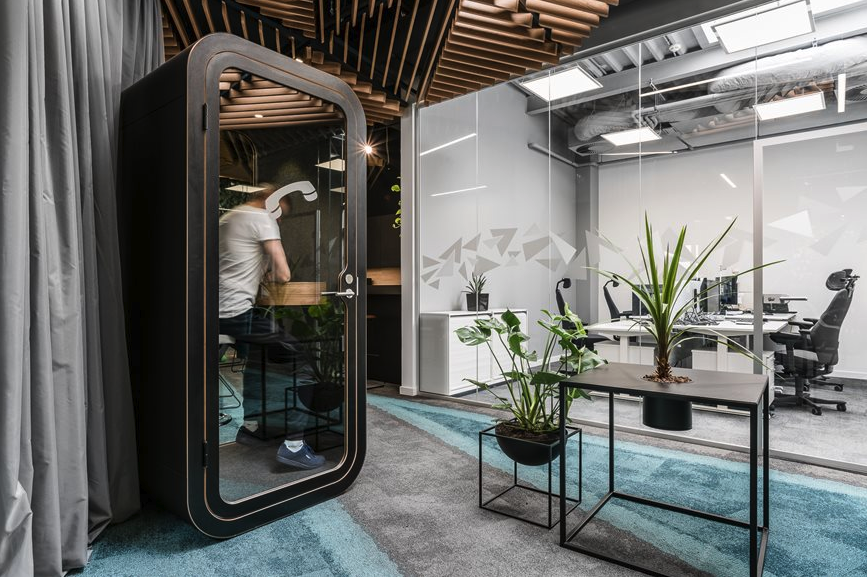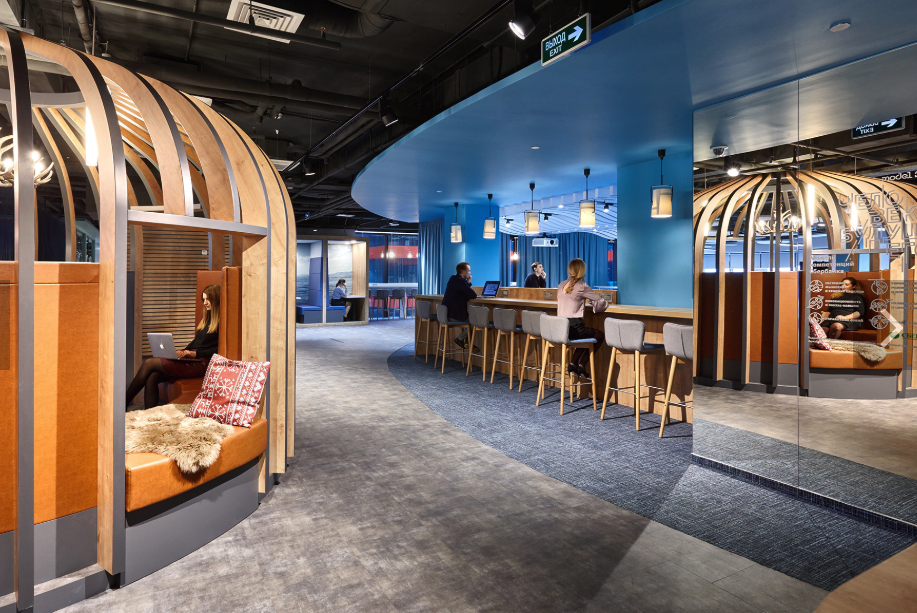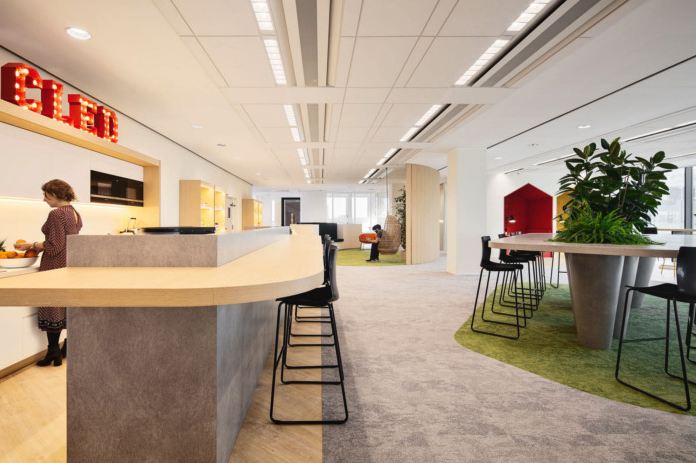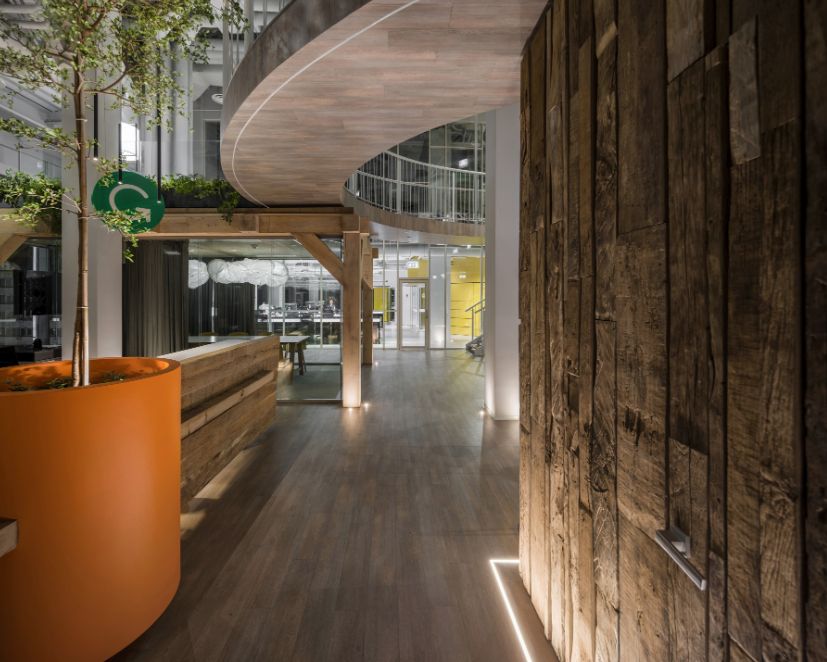The Best Activity Based Workspaces In Europe


While the concept of activity-based workspaces may have been introduced by an American architect, the first company to implement this workplace strategy was in Europe in the 1990s.
Over the past three decades, our European neighbors have perfected the art of designing activity-based workspaces. Here are some of the most impressive.
6 Activity-Based Workspaces In Europe
1. Volvo Trucks Poland (Warsaw, Poland)

When Volvo Trucks Poland relocated its headquarters to Młochów near Warsaw, the company saw it as the perfect opportunity to update their office design. The goal was to create additional space for both formal and informal meetings as well as expand areas for socialization, private conversations and “chillout zones.” The management team also wanted to tie in Swedish architectural style as a tribute to the company’s culture.
“The open, flexible and friendly space affords good conditions for dynamic and creative work and cooperation,” head architect Izabela Sylwia Nowak said in a case study for Kinnarps office furnishings. “A workplace’s quality has a discernible effect on employee relations, therefore an office venue should above all provide comfort, bolstering well-being and efficiency, so that employees actually want to reside there.”
Following the update, the offices now have plenty of breakout areas and enclosed meeting spaces along with phone booths employees can use for personal calls. The refresh was such a success that Volvo made plans to renovate its offices in Lithuania, Slovenia and Switzerland, too.
2. Sberbank (Moscow, Russia)

In 2017, Sberbank, the largest bank in Russia and Eastern Europe, decided to transform its traditionally-designed office into a smart, agile workplace. Its Moscow headquarters was comprised of four floors, each over 24,000 square feet. Not only was the property size intimidating, the building originally housed apartments, meaning the design was based on boundaries and separation — not the free flow of people.
Swiss architecture and design studio Evolution Design addressed this issue by dividing each floor into four individual zones with a communication hub in the center. To help make navigating the space easier, each zone has a specific color and graphic theme.
Within the central hub is a large, multifunctional meeting room, an area for quiet work, two kitchens and multiple informal seating areas. It also has a coworking area with high tables with whiteboard surfaces for brainstorming and panoramic views of Moscow. The rest of the office features small meeting rooms, breakout areas and single rooms for individual work.
3. AirHelp (Berlin, Germany)

Founded in 2013, AirHelp has become the world’s largest air passenger rights advocate. They help passengers understand their rights and request compensation for delayed, canceled or overbooked flights.
Earlier this year, the company partnered with workplace design firm WEEKDAY to create a flexible, activity-based workspace in their 6,600 square foot office in Berlin. The firm built an office composed of six different environments:
- Community areas to foster creativity
- Teamwork areas with plug-and-play technology to facilitate collaboration
- Focus areas with plenty of natural light for distraction-free work
- Nap rooms
- Conference rooms with glass walls to represent transparency
- Phone booths for private conversations
“Our task was to create a scalable open floor plan while making room for people and life at work,” Alejandra Albarran, Creative Director at WEEKDAY said in a case study on architecture design website Officelovin’. “We set out to find a solution in the intersection between the needs of the corporate world and the needs of the modern worker.”
(Source: Officelovin’)
4. Health & Happiness Group (Milan, Italy)

When the nutrition and vitamin company Health & Happiness Group tasked office design specialists Tétris with designing its new headquarters, the firm decided to use the company’s motto as guidance: “The way we live our lives and the choices we make, directly impact the joy we experience.”
The result was a bright, relaxed environment that encouraged collaboration and fostered a sense of belonging.
Tétris created three different environments for the space:
- A reception area surrounded by meeting rooms
- An open space with flexible workstations, comfortable seating and multipurpose rooms for everything from workshops to yoga
- A casual hybrid space for socialization and informal meetings or events
Everything from the flooring choices to the furniture were inspired by nature. For example, grass effect carpet adorns the floor and the walls are decorated with greenery and wood-effect materials. Swings hanging from the ceiling also help support the relaxed atmosphere.
5. Peldon Rose (London, United Kingdom)

Office design and refurbishment consulting firm Peldon Rose recently put some of its own practices to work to update the offices in London. The company had called the space home for nearly 20 years and wanted to repurpose and extend the existing space.
The team aimed to create a smart, flexible space with neighborhoods and personal storage space for each department with a variety of meeting rooms, collaboration spaces and breakout areas. The goal was to design a workplace that encouraged people to move throughout the office and work together.
“We redesigned our office in Wimbledon to provide our people with a better working environment, an office that would create a sense of pride amongst our people,” a Peldon Rose representative said in the case study. “We’ve always referred to Sterling House as our home, so this was how we wanted people to feel in the space. The design vision was about promoting a highly functional space that retained a warm and welcoming atmosphere.”
6. Grammarly (Kiev, Ukraine)

Grammarly is an online grammar and spell-checking digital writing assistant with offices in San Francisco, New York and Kiev. Three years ago, the Kiev team had outgrown its space and decided to relocate. The current workplace was already using an activity-based workspace, which meant the new space would need to as well.
In addition to a large conference room with 150 seating capacity and multiple small meeting rooms with video conferencing technology, the company also needed private rooms for solo work, a canteen, nap rooms and several lounge areas. Similar to Sberbank, Grammarly’s workspace design partner chose to situate these spaces around a central element — in this case, the largest conference room.
Around the space Grammarly refers to as the “meet-up zone” are six working zones with several individual rooms as well as large meeting rooms designed to accommodate 8-15 people. The workplace also features 21 lounge areas (including a library, nap room, music room and fireplace room), which are accessible via a suspension bridge that wraps around the entire office
Creating Your Own Activity-Based Workspace
These activity-based workspaces show that with the right design, you can improve collaboration, enhance productivity and support a positive employee experience.
Activity-based working(ABW) also offers surprising and overlooked benefits, including increasing physical activity and reduced costs. When you consider the fact that many companies today allow employees to work remotely at least part of the time, you may only be using a portion of your available workspaces on any given day.
Having a mix of individual work stations and collaborative spaces gives employees more flexibility while making better use of your space.
It also makes the workplace more inviting, which will encourage employees to spend time there—even if they have the option to work from home.
